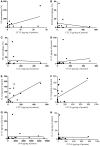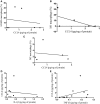Systemic Inflammation in Cachexia - Is Tumor Cytokine Expression Profile the Culprit?
- PMID: 26732354
- PMCID: PMC4689790
- DOI: 10.3389/fimmu.2015.00629
Systemic Inflammation in Cachexia - Is Tumor Cytokine Expression Profile the Culprit?
Abstract
Cachexia affects about 80% of gastrointestinal cancer patients. This multifactorial syndrome resulting in involuntary and continuous weight loss is accompanied by systemic inflammation and immune cell infiltration in various tissues. Understanding the interactions among tumor, immune cells, and peripheral tissues could help attenuating systemic inflammation. Therefore, we investigated inflammation in the subcutaneous adipose tissue and in the tumor, in weight stable and cachectic cancer patients with same diagnosis, in order to establish correlations between tumor microenvironment and secretory pattern with adipose tissue and systemic inflammation. Infiltrating monocyte phenotypes of subcutaneous and tumor vascular-stromal fraction were identified by flow cytometry. Gene and protein expression of inflammatory and chemotactic factors was measured with qRT-PCR and Multiplex Magpix(®) system, respectively. Subcutaneous vascular-stromal fraction exhibited no differences in regard to macrophage subtypes, while in the tumor, the percentage of M2 macrophages was decreased in the cachectic patients, in comparison to weight-stable counterparts. CCL3, CCL4, and IL-1β expression was higher in the adipose tissue and tumor tissue in the cachectic group. In both tissues, chemotactic factors were positively correlated with IL-1β. Furthermore, positive correlations were found for the content of chemoattractants and cytokines in the tumor and adipose tissue. The results strongly suggest that the crosstalk between the tumor and peripheral tissues is more pronounced in cachectic patients, compared to weight-stable patients with the same tumor diagnosis.
Keywords: cancer cachexia; inflammatory cells; tumor-adipose tissue crosstalk macrophages.
Figures








References
LinkOut - more resources
Full Text Sources
Other Literature Sources

